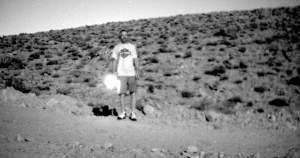Low Light CMOS Sensor Battle Has Clear Winner! FT. AP HILL, VA public release. The latest in low light CMOS sensors was showcased in a live fire range demonstration at FT. AP Hill. Multiple sensors and technologies were showcased for an invite only crowd consisting of active US Military operators and US Government R&D personnel. The star of the show was the CWO concept, demonstrated by SPI CORP and the DARPA CWO Team, featuring the HFiS X26 camera module and the ultra sensitive x27 color low light day/night vision CMOS sensor. This technology is said to be the newest in low light cmos imaging sensors and is claimed to have complete day to night imaging capabilities. So, did the HFiS pan out? How did it compare to the competition?
-> Just Introduced, the X27 low light color night vision camera system.
The X27 is the worlds most sensitive color low light / low lux sensor, Click here for more details

The x27’s digital electronic chip module can be integrated and fused into subsystems such as rifle mounted weapon sights and scopes, night vision goggles, binoculars, gimbals, gyro-stabilized PTZ pan tilt zoom cameras and enclosures, monocular viewers, remote sensing multi purpose, multi role hand held, hands free, head and helmet mounted soldier systems, LRF (Laser rangefinders) image blending/fusion with complimentary sensors such as NIR, VNIR, FLIR, LWIR/MWIR thermal IR infrared imagers/SWIR, and aviation / avionics systems. The x27 color low light night vision camera also works well with a host of IR infrared lasers, illuminators, pointers and designators.
If your application requires the absolute highest resolution, highest sensitivity in the absolute lowest light environments, then the x27 color low light, low lux, high iso night vision sensor is the only choice. The back thinned sensor offers 85,000x luminance gain and has very high quantum efficiency in color low light imaging and outperforms traditional monochrome, green, white phosphor image intensified I2 night vision tube technology. The camera also heavily outperforms all CMOS, ScMOS, CCD, canon Me20f-sh multi purpose camera, SWIR, Intensified, EMCCD low light technologies. Unlike image intensified technology, the x27’s sensor can not be damaged or destroyed by bright light/energy sources. You can look directly at the sun with the x27 camera without any issues.
WHAT COMPETITION- The HFiS X26 Low Light CMOS sensor module from SPI CORP posts some serious numbers in the night vision imaging world. The imager is completely passive, digital based, produces better images in low light than intensified tube night vision, can visualize farther into the near IR range (over 1100nm) than competing technologies, requires no high voltage power supplies or active cooling of any kind and produces HD video 24/7 in bright daylight and no moon starlight conditions. One sensor for all your imaging needs. Wow. To use an old cliche “this is the holy grail of imaging technology”. But is it really all that? These are bold claims, so lets look into it a bit.
Passive Imager – This means that there is no illumination required to produce an image. Many low light technologies rely on either visible or IR lights to produce an image. A passive imager only uses what ambient light is available. It can also mean that there are no coolers or high power active supplies.
Digital Based Imaging – This just means that it is a digital imaging technology that converts visual information into a digital form. Just like your cell phone, camcorder or digital camera. The importance of this is that the traditional king of night vision (the image intensified tube) is an analog system. The green image you see in night vision goggles is actually stuck in that tube. There is no video output or digital image storage, the image is created and displayed within that little tube and stuck there. That’s bad because in today’s connected world data that cant be shared is data that is a dead end. The Military has stuck with tube based technologies because they have always been superior to and imaging sensor technology, until HFiS.
Better Images In Low Light Then Intensified Tube – Well this right here is the holy grail. Many have claimed this and fought to achieve this. But, the HFiS is the first low light cmos imaging module that can actually outperform Gen III image intensified tube technology in a straight up shoot out for low light performance.
Farther IR Wavelength Range Response – The ability to image into the near IR wavelength range (beyond 1100nm) is not the whole story. Sure this lets you see more “light” and can visualize battle field lasers like the 1064nm. But, the HFiS also claims orders of magnitude increase in efficiency and sensitivity in those IR wavelengths. This is part of the secret to imaging in lower light than any other technology.
No High Voltage Power Supplies or Active Cooling – Competing technologies like EBAPS and even traditional image intensified tube systems use high voltage power supplies. This is not only inefficient from a SWaP stand point but also a little scary. Who wants 10,000 volts next to a soldiers head? Some low light cmos technologies EMCCD use active cooling to combat noise in the sensor from dark current. The cooling of course sucks power, adds weight, causes noise and reduces system MTBF. Active cooling is not necessary in HFiS X26 low light cmos cameras.
Produces HD Video 24/7 In Day Light or Low Light Starlight Conditions – This is truly an amazing breakthrough. The reigning king of night vision (the image intensified night vision tube) has been untouchable in night imaging performance but do not turn them on in daylight. The tubes actually destroy them selves if exposed to bright light and are strictly a night time tool. CMOS, CCD and CCTV cameras have long been used for daytime imaging but have always been terrible at low light imaging. Many PTZ or security systems couple a good daytime imager with a night vision or thermal imager to give the user 24/7 performance. Now, with low light CMOS the dream of one sensor that can see in the daytime and equally in the night time opens up the possibilities for endless enhancements. The HFiS X26 claims to be the low light cmos technology that will reduce the need for multiple sensors and drastically reduce costs, weight, size and complexity of countless systems while at the same time opening up performance doors that have long remained shut.
OK so wow you claim to be the Holy Grail. These are big words and lots of hype. Does it deliver? Well in a word YES. Take a look at this image.
This is just a quick image taken while testing the HFiS in the desert near Las Vegas, NV. This was in the dark of night and the guy is holding a lit cigarette. The HFiS Low light CMOS sensor is amazing in the detail and clarity it produces in extremely challenging situations. We had a pair of GEN 3 Night Vision Goggles with us and the difference is truly amazing. Unfortunately, GEN III NVG is analog so we had no good way to capture a comparison shot. We are working on that so we can show you a true comparison but for now score another point for HFiS Digital Night Vision!
That’s the result. HFIS LOW LIGHT CMOS SENSOR really does outperform anything on the market. Want us to do another shoot out just let us know.
Contact SPI CORP with any questions regarding this technology. 702-499-9551.
HFiS X26 Low Light CMOS High Fidelity Sensor Page
X27 low light color night vision security camera page
The sensor technology, called CMOS is increasingly being used in today’s cameras, allowing users to shoot 1080p video and apply complex imaging effects with ease. Traditionally, Ccd sensors have been thought to produce better-looking images with less visual noise and distortion, but they draw more power and provide slower data-throughput speed. The shift to CMOS helps to explain how this technology has evolved dramatically throughout the years…in recent years, attracting the growing number of consumers who want high performance low light on the go. Specialty low light level LLL Cmos is another arena of this technology that is evolving. Large pixel pitch sizes allow the chip to collect ultra extreme amounts of light and translate them photons into a clear clean bright image in very dark night scenes. The x27’s low light color technology utilizes specialty algorithms that allow the sensor to see in extreme low light environments traditionally unseen before. The x27 night vision camera displays true high fidelity color imagery at fast frame rates and in very challenging conditions. Sensor speed by itself may not be something that people can see the great value in, but sensor speed together with specialty processing power allows the x27’s CMOS sensor to realize features that you likely couldn’t do with even the best CCDs the fpa can capture light at very high rates of speed while delivering a real time usable image for many defense/security and surveillance applications. For the most part, CMOS’s comparative benefits lie outside the realm of image quality altogether. Traditionally CMOS chips have been associated with theoretically cheaper manufacturing costs, greater energy efficiency, faster data-throughput speeds, and the fact that the on-sensor circuitry handles some processing tasks before the data comes off each pixel and the sensor itself. Of course, a camera’s image processor also has a lot to do with the final image, and those are becoming more and more powerful, too. Back side illumination of chip technology is another area that allows the chip to output higher performance in low light, the x27’s color night vision detectors bsi backside illumination is yet another aspect that makes it desirable for Imaging at never before seen extreme low light conditions. The x27 ultra extreme low light color night vision complementary metal oxide semiconductor (CMOS) integrated circuit (IC) is a vital proven technology. SPI applies its imaging and IC expertise to achieve incredible low light imaging performance to its x27 camera. The x27 is an all solid state alternative to conventional image intensifiers. The x27’s specialty sensor will integrate a low-light CMOS imager with advanced video processing capabilities for image enhancement. This powerful, compact wide dynamic range, very high Light gathering (5 million ISO equivalent) sensor has the capability to achieve unprecedented performance in 1080p, 4K, 8k HD low-light conditions for night vision and ground-based, space & airborne intelligence, security, surveillance, and reconnaissance applications—as well as in microscopy, biofluorescence, and DNA sequencing.
Low light level imaging at night in extreme dark conditions with a un-intensified CMOS sensor requires proper selection and optimization of imager design features. Backside illumination with relatively thick silicon is desirable to collect the photons over the visible and near-infrared spectrum, a large pixel size is desireable for light gathering. The X27 Color low light night vision sensor pays close attention to key factors in imaging such as optics design considerations, maintaining full color fidelity at real time tv refresh rates, readout temporal noise, tight noise distribution, Low Dark shot noise, high modulation transfer function (MTF), fixed pattern noise (FPN) reduction, anti glare, distortion and blooming, rapid imager recovery in complex scenes and extended dynamic range.
Email Mike at info@uav1.com for additional information
and custom integration or CALL (702)-499-9551
____________________
CLICK HERE FOR THE X26 Monochrome LOW LIGHT Sensor system






